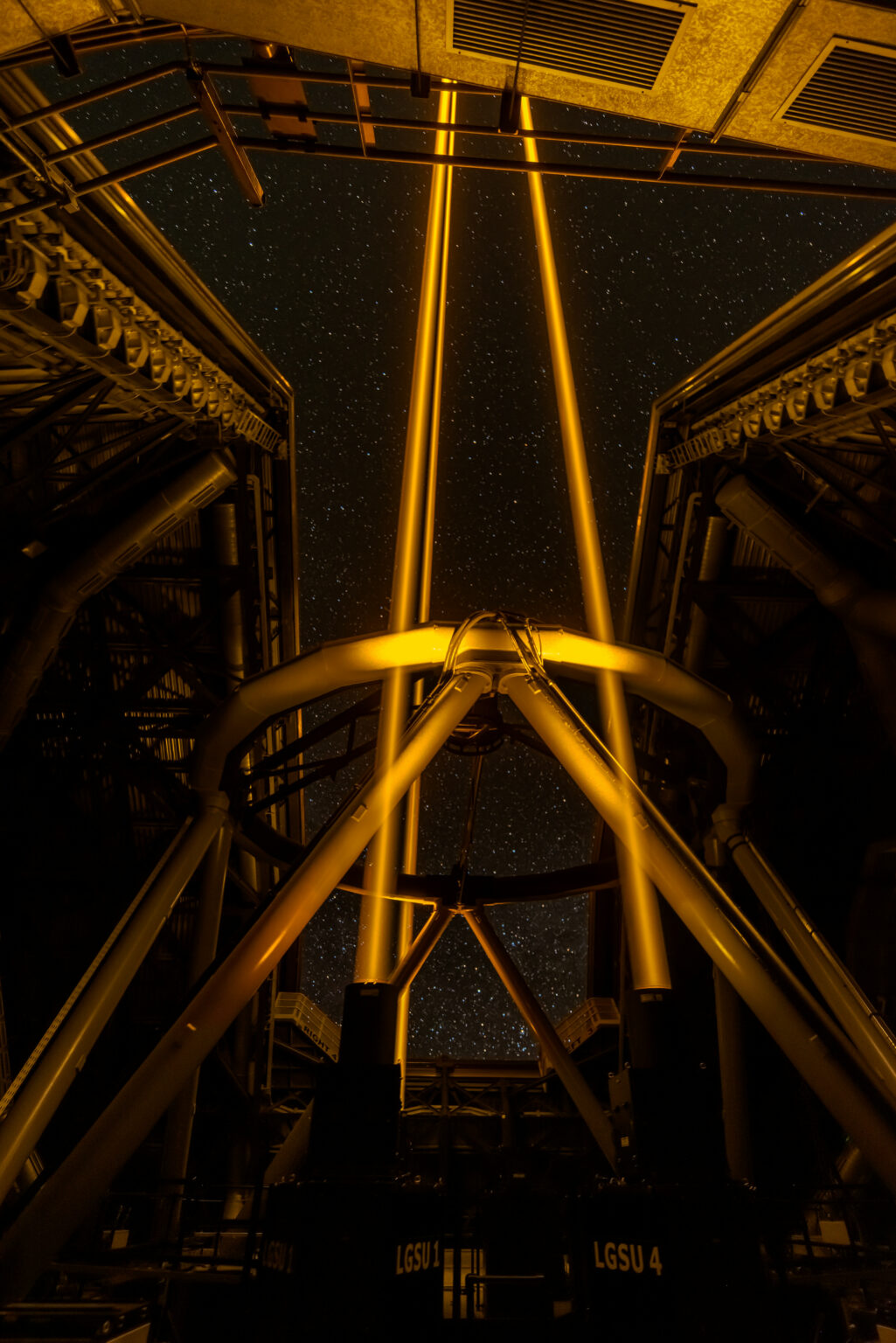This photo was taken inside one of the four main telescopes of the ESO’s Very Large Telescope (VLT) complex. It demonstrates the process of operation of an installation designed to create artificial stars.

Modern observatories designed to capture the light of extremely distant objects in the Universe and search for extrasolar worlds should create crisp and clear images. To achieve this goal, they are equipped with adaptive optics systems like the one that can be seen in the presented image.
The VLT adaptive optics system consists of four sodium lasers aimed at the sky. When the rays emitted by them reach a height of about 90 kilometers, they excite the layer of atomic sodium located there, which begins to glow. As a result, artificial stars light up in the sky. In response to the flickering and shaking of these artificial stars, the deformable secondary mirror VLT changes the profile of its optical surface on a millisecond time scale, correcting the distortions created by atmospheric turbulence.
Someone may have a question: there are already billions of luminaries in our Milky Way, so why should astronomers create new ones? The fact is that for the adaptive optics system to work, it is necessary that a relatively bright reference star be in the field of view near the weak object that is the target of observations. But this happens very rarely. That’s why astronomers have to light new stars.
You can also read about how VLT obtained the spectra of Jupiter’s icy moons.
According to https://www.eso.org
Follow us on Twitter to get the most interesting space news in time
https://twitter.com/ust_magazine

